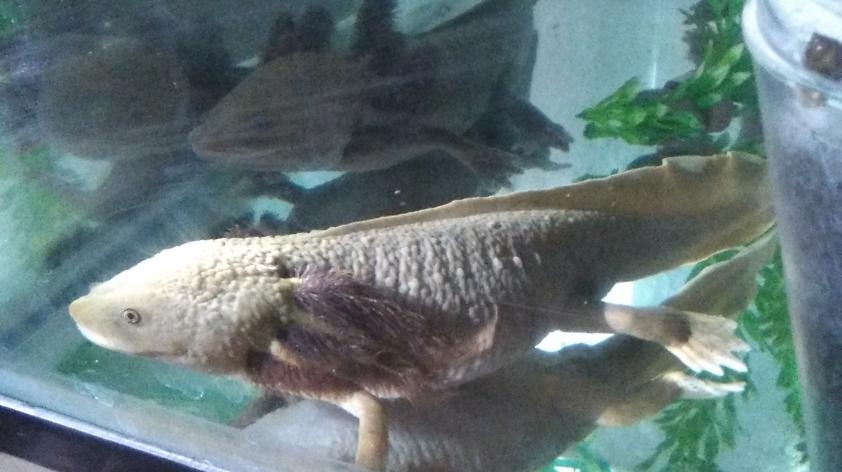
Jimbandi Erandi: Captive rescue and preservation of a Mexican icon
In ancient Mexican culture, Xolotl (pronounced Sholotl) or Axolotl, is of great mythological importance. The incarnation of the god of dusk and the evening star, Xolotl was charged with guiding the dead on their journey to Mictlan, (the underworld). To the indigenous people of Mexico, the Axolotl was not only a god, it has for many centuries been used in medicinal remedies because of its unusual regenerative properties.
In the 16th century, the ancient cultures of the Americas came face to face with an entirely new civilization. Fortune hunters and missionaries arrived on the new continent to seek wealth and opportunity and to spread Christianity. Included in this mass immigration was a group of nuns known as the Sisters of the Immaculate Health. This group of nuns quickly established themselves amongst the indigenous communities of the Purepecha Indians (a tribe of Michoacan) and became locally known as the sisters of Avenida Madero. Almost 250 years later, this order of nuns continues to live in the region and they remain a significant presence in the life and culture of the small community of Lake Patzcuaro. Lake Patzcuaro is Mexico’s 3rd largest lake (97 km²) and home to many unique native species. Out of 17 Axolotl species described in North America, 4 are endemic to Mexico and one, Ambyostoma dumerilli (known locally as “Achoque”), is known to occur only in this lake.
In addition to their vocation to God these nuns have also become the driving force behind the unification of local traditional practices with sustainable conservation. The sisters of the Immaculate Health are also the official guardians of an ecological reserve known as Jimbandi erandi, which means “a new dawn” in Purepecha. Through their interaction with the Purepecha Indians, the Dominican nuns came to know of the cryptic and charismatic Achoque and in time adopted the cultivation practices of this creature from the Purepecha’s. However, once bountiful in Lake Patzcuaro, the Achoque, like so many species, has fallen prey to the excesses of man. Pollution, loss of habitat due to agricultural practices, climate change, unmonitored recreational use of the lake and the introduction of non-endemic species has driven this iconic animal to the brink of extinction.
On November 5th I walked into the registration room at a congress on germplasm to be held at the Comision Nacional de Recursos Geneticos (National Commission for Genetic Resources), in Jalisco, Mexico. As I clumsily chatted in my ever-fading Spanish, I suddenly noticed the presence of two nuns. I must admit that I was a little surprised by the sight of Catholic nuns at a conference on germplasm cryopreservation, but once we were introduced it all became clear. Sisters Ofelia and Rosita, along with 15 others in their order, run a captive breeding program of Ambyostom. dumerelli. After 15 years of practice, these ladies have successfully achieved what any amphibian breeder can tell you is no easy feat, a healthy and self-sustaining captive population of axolotls. The Sisters attended the congress on germplasm banking to learn more about the different technologies that may now provide them with alternative methods of preserving genetic diversity of this unique species.
Personally, I want to introduce this more complex story because it is the perfect example of citizen science, dedication and community-based conservation. The Sisters, along with the local indigenous populations, recognized the ecological peril their habitat was in and sought to change it. The dedication of these women to this species is exemplified in a book that they recently published entitled “Experiences in Achoque captive breeding” (available only in Spanish).
However, their involvement in the preservation and restoration of this species doesn’t end at a captive level, nor does it end with one species. As the local administrators of the “Jim Erandi” ecological reserve and in conjunction with the Purepecha community, the Sisters continue to re-introduce and monitor this iconic species and the Jim Erandi reserve as a whole.













